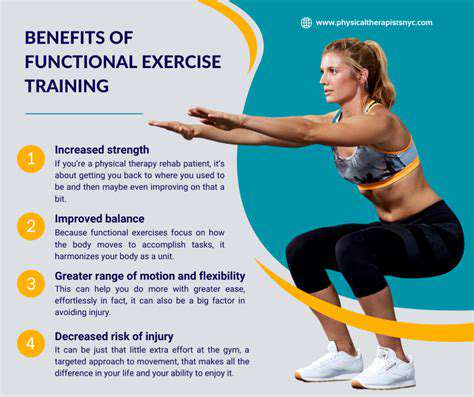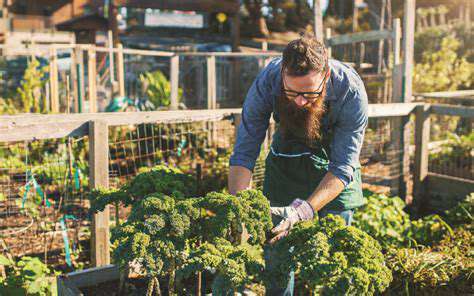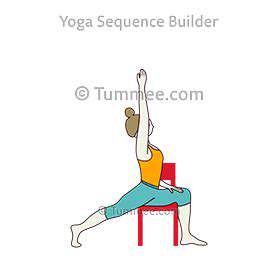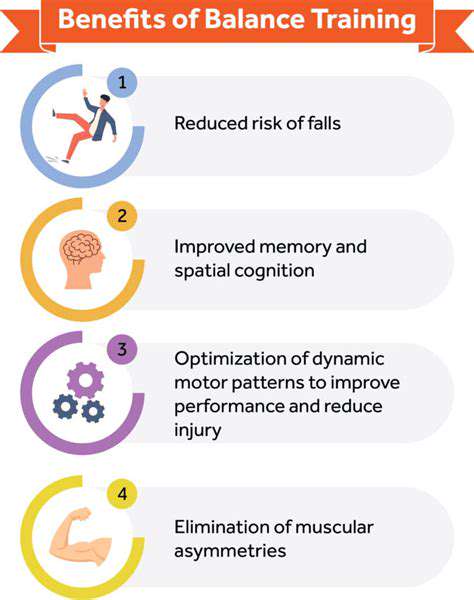How to Improve Your Balance While Walking with a Cane
Tips for Maintaining Stability on Different Surfaces
Understanding Surface Variations
Different surfaces present unique challenges to balance. A smooth, polished floor, for example, offers less friction than a carpeted area or an uneven, outdoor path. This difference in friction directly impacts the stability you can achieve. Recognizing these variations in surface texture, whether it's the slickness of a wet floor or the unevenness of gravel, is the first step in adapting your balance strategies accordingly. A crucial component of maintaining stability on various surfaces involves understanding how your body interacts with each one.
Knowing the specifics of the surface you're on, like its material and condition (e.g., wet, icy, or uneven), is vital to anticipating potential instability. This awareness allows you to consciously adjust your posture and gait to compensate for the varying levels of support each surface offers. For example, when walking on a grassy slope, you'll likely need to adopt a wider stance and shorter steps compared to walking on a level pavement.
Adjusting Your Posture and Stance
Maintaining a stable posture is paramount when navigating different surfaces. Adjusting your center of gravity and distributing your weight evenly across your feet are key strategies. A proper posture involves keeping your core engaged, your back straight, and your eyes focused on a fixed point ahead, rather than on the ground. This not only enhances your balance but also helps you maintain control during movements.
The width of your stance plays a significant role in stability. A wider base of support provides more stability, especially on uneven or slippery surfaces. Think about how you adjust your gait on a staircase—you naturally increase your stance width to prevent falls. Adjusting your stance is a crucial, often subconscious, adaptation to maintain balance across various surfaces.
Utilizing Proprioception for Stability
Proprioception, our body's awareness of its position in space, is a critical component of balance. On different surfaces, our proprioceptive feedback changes, requiring our bodies to recalibrate constantly. This process involves subtle adjustments in muscle tension and joint position to maintain equilibrium. Practicing balance exercises, like standing on one leg or performing heel-toe walks, can enhance your proprioceptive awareness and improve your ability to adapt to changing surface conditions.
By engaging in activities that challenge your balance, you're essentially training your body to better interpret and respond to the sensory information it receives from the environment, leading to improved stability on various surfaces. Regular practice strengthens the neural pathways responsible for proprioception, enabling more effective balance responses. This is especially crucial when navigating complex or unpredictable environments.
Controlling Your Gait and Movement
Your gait—the way you walk—significantly impacts your balance on different surfaces. On uneven terrain, you need to adjust your step length and cadence. Taking smaller, more controlled steps on uneven ground is important for avoiding sudden shifts in balance. Conversely, on smooth surfaces, a more confident, rhythmic stride can often be maintained. This conscious control over your movement allows you to anticipate and react to potential challenges.
Paying attention to the rhythm of your steps, especially when transitioning between different surfaces, is crucial for maintaining balance. This awareness of your body's movement in relation to the ground is a key aspect of maintaining stability across various surfaces. Practice different walking patterns and adjust your pace according to the surface's characteristics.











